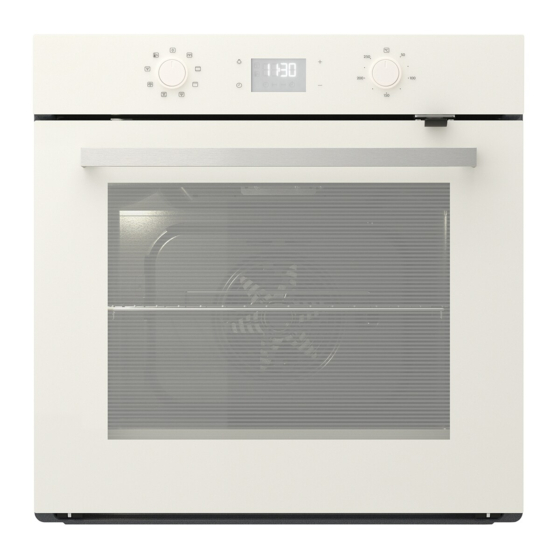ENGLISH
Recommended use and tips
How to read the cooking table
The table indicates the best function to use
for any given food, to be cooked on one or
more shelves at the same time. Cooking times
start from the moment food is placed in the
oven, excluding pre-heating (where required).
Cooking temperatures and times are purely
for guidance and will depend on the amount
of food and type of accessory used. Use the
lowest recommended values to begin with
and, if the food is not cooked enough, then
move on to higher values. Use the accessories
supplied and preferably dark coloured metal
cake tins and oven trays. You can also use
pans and accessories in pyrex or stoneware,
but bear in mind that cooking times will be
slightly longer. To obtain best results, carefully
follow the advice given in the cooking table
for the choice of accessories (supplied) to be
placed on the various shelves.
Cooking different foods at the same time
Using the "FORCED AIR" function, you can
cook different foods which require the same
cooking temperature at the same time (for
example: fish and vegetables), using different
shelves. Remove the food which requires less
cooking time and leave food which requires
longer cooking time in the oven.
Desserts
- Cook delicate desserts with the conventional
function on one shelf only. Use dark coloured
metal cake tins and always position them on
the wire shelf supplied. To cook on more than
one shelf, select the forced air function and
stagger the position of the cake tins on the
shelves, aiding optimum circulation of the hot
air.
- To check whether a raising cake is cooked,
insert a wooden toothpick into the centre of
the cake. If the toothpick comes out clean, the
cake is ready.
- If using non-stick cake tins, do not butter the
edges as the cake may not rise evenly around
the edges.
- If the cake "sinks" during cooking, set a lower
temperature the next time, perhaps reducing
the amount of liquid in the mixture and mixing
more gently.
- For sweets with moist fillings (cheesecake
or fruit pies) use the "CONVECTION BAKE"
function. If the base of the cake is soggy, lower
the shelf and sprinkle the bottom of the cake
with breadcrumbs or biscuit crumbs before
adding the filling.
Meat
- Use any kind of oven tray or pyrex dish
suited to the size of the piece of meat being
cooked. For roast joints, it is best to add some
stock to the bottom of the dish, basting the
meat during cooking for added flavour. When
the roast is ready, let it rest in the oven for
another 10-15 minutes, or wrap it in aluminium
foil.
- When you want to grill meat, choose cuts
with an even thickness all over in order to
achieve uniform cooking results. Very thick
pieces of meat require longer cooking times.
To prevent the meat from burning on the
outside, lower the position of the wire shelf,
keeping the food farther away from the grill.
Turn the meat two thirds of the way through
cooking.
To collect the cooking juices it is advisable
to place a drip-tray with half a litre of water
directly under the grill on which the meat is
placed. Top-up when necessary.
Pizza
Lightly grease the trays to ensure the pizza
has a crispy base. Scatter the mozzarella
over the pizza two thirds of the way through
cooking.
27

